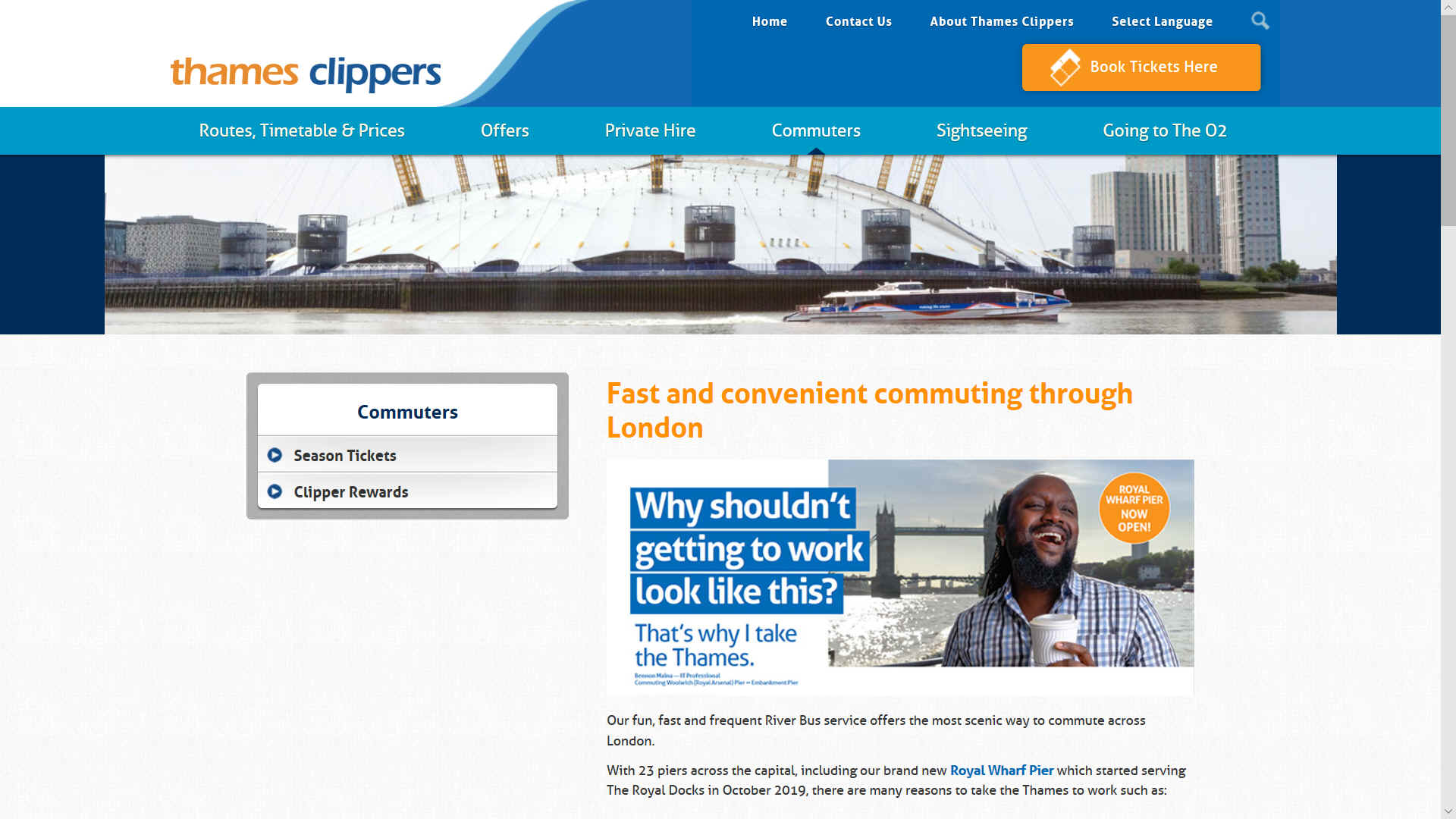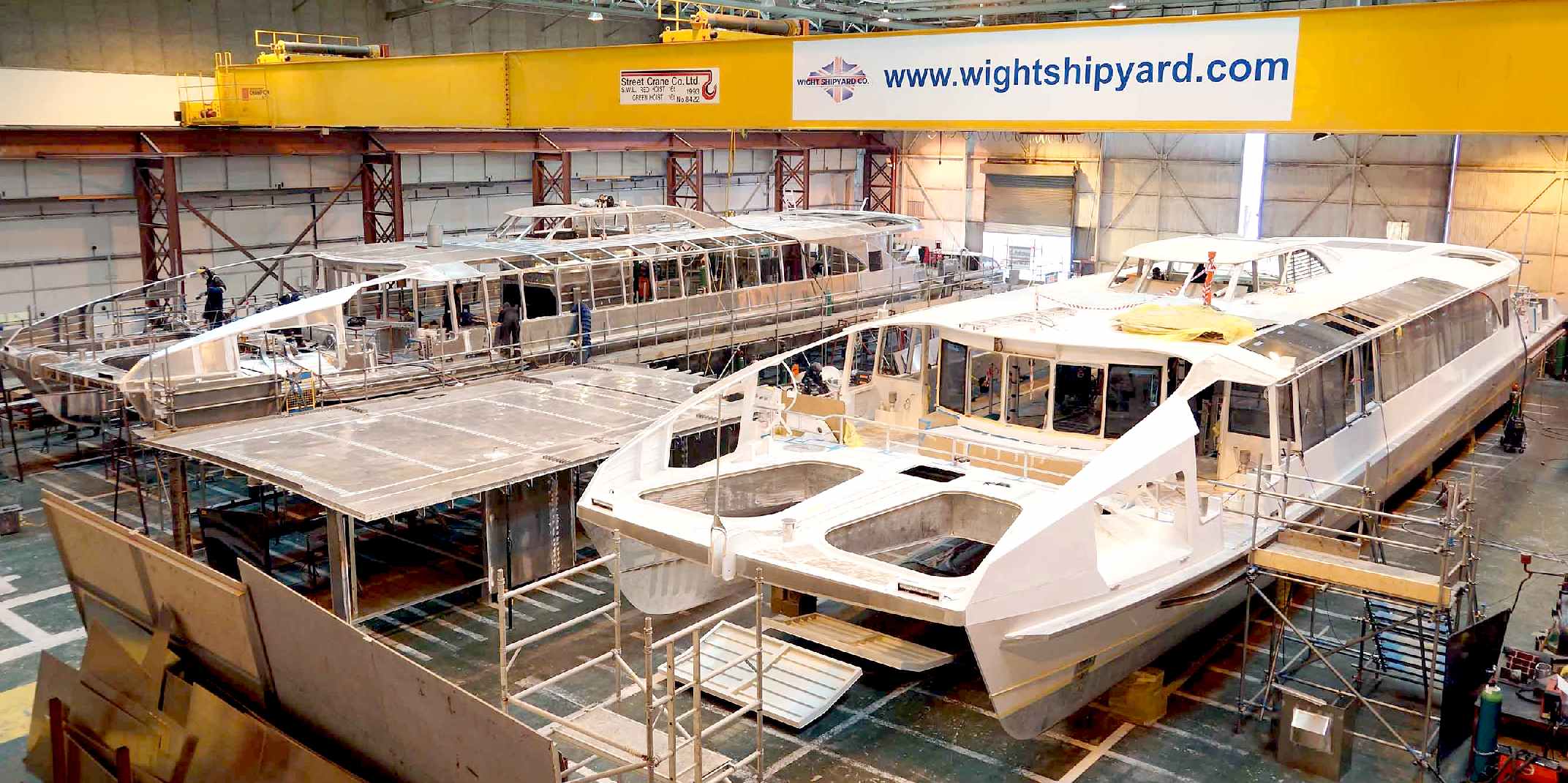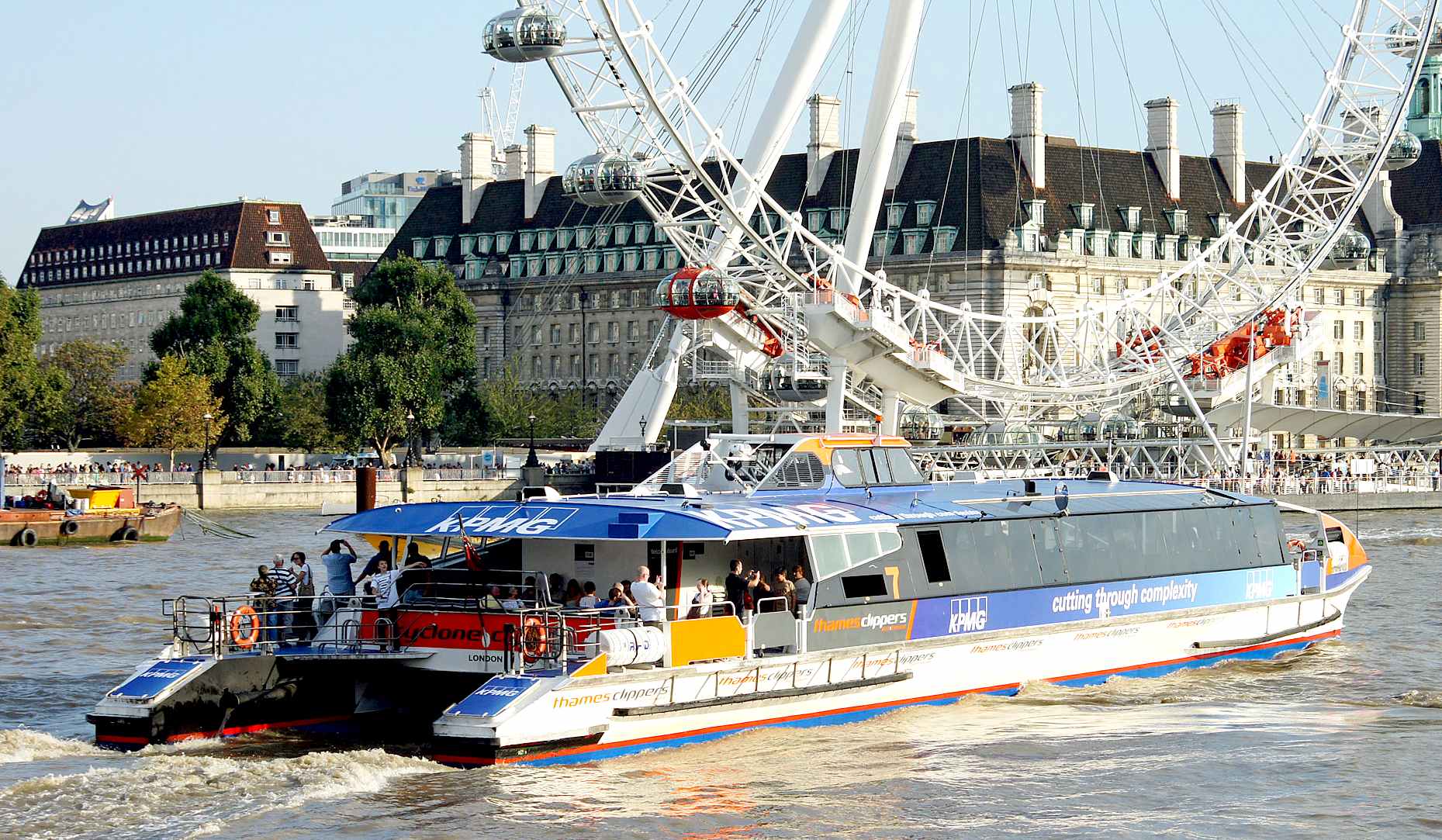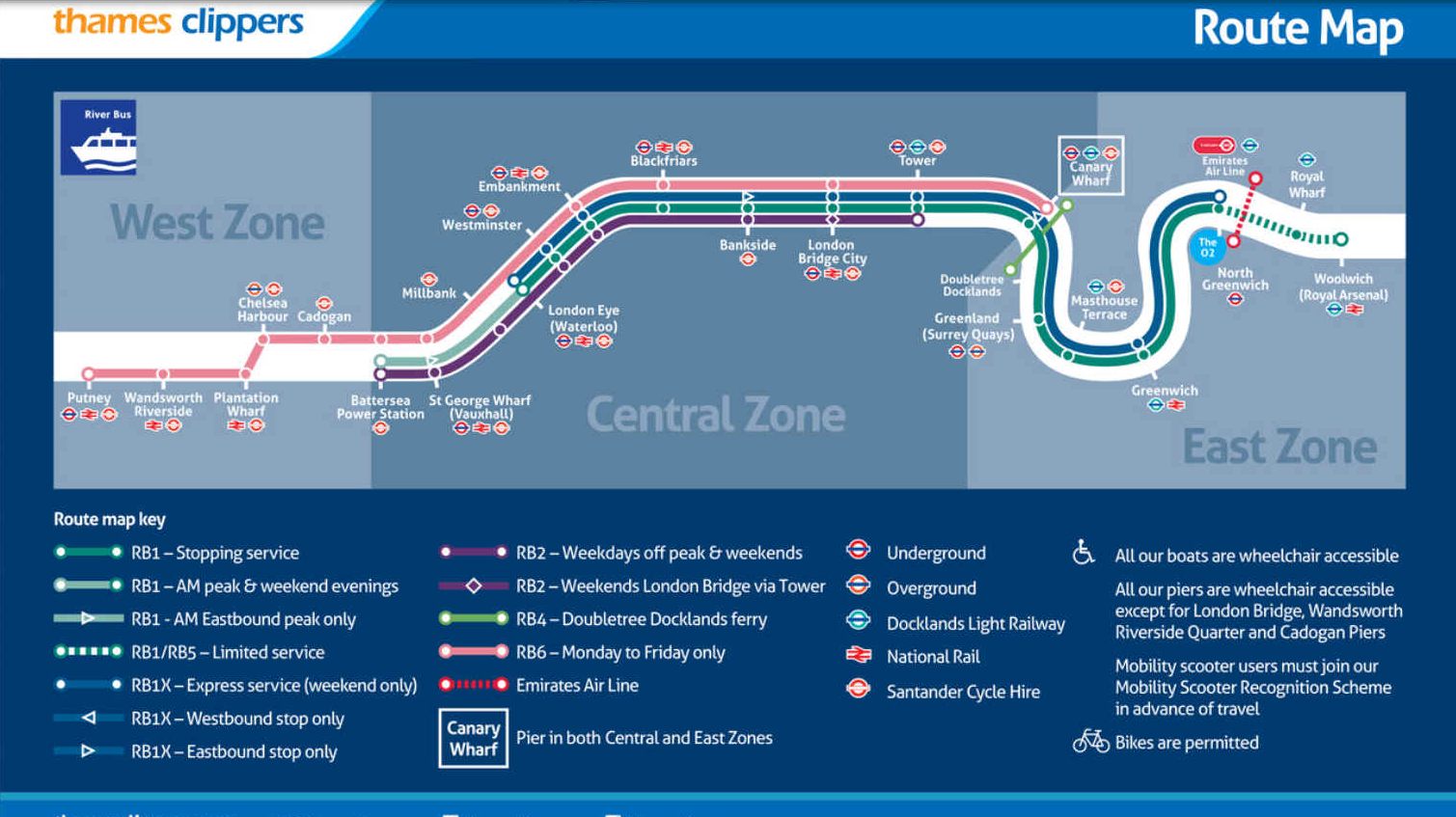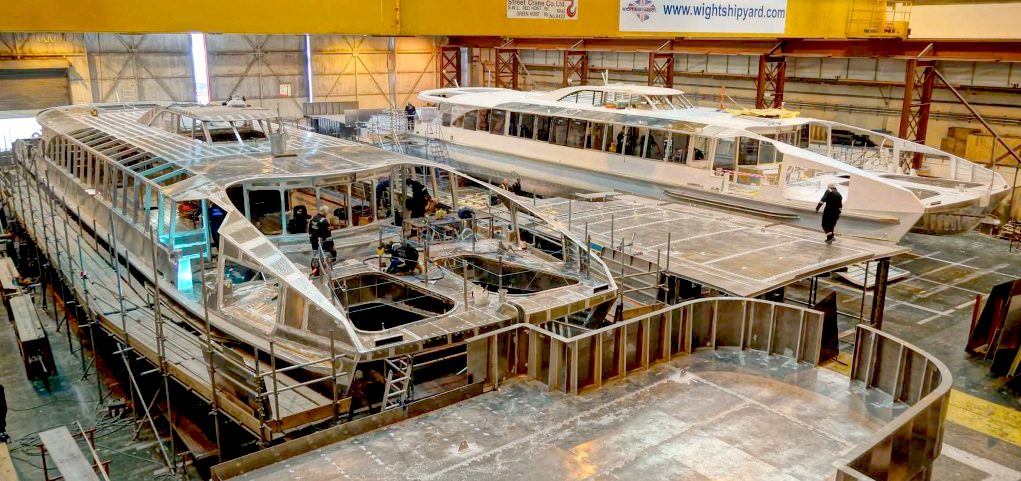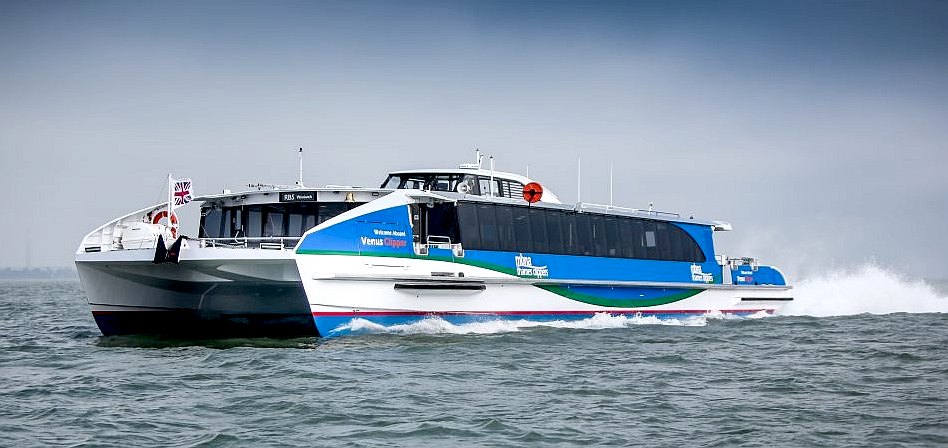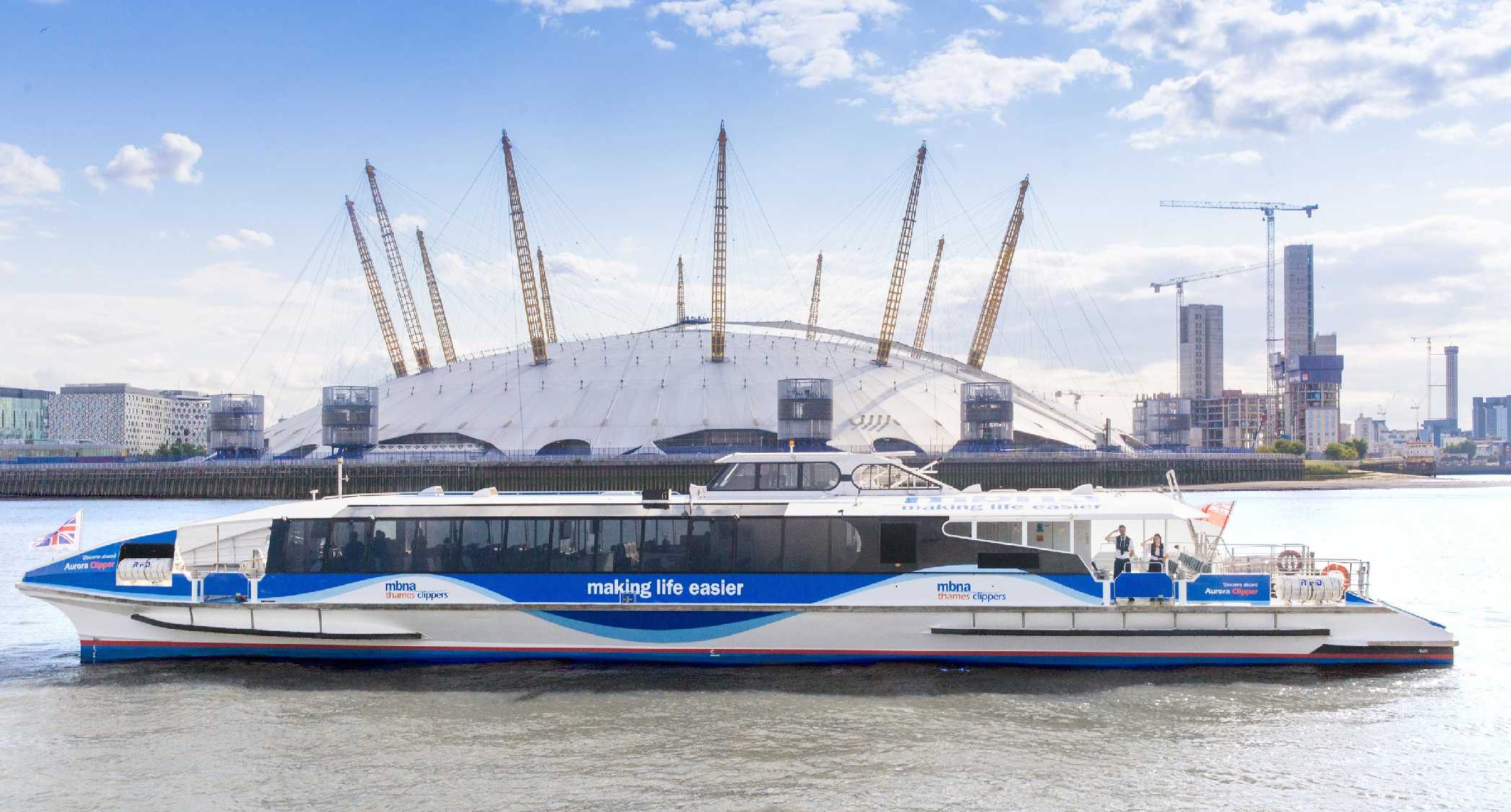|
LONDON CLIPPER, THAMES FERRY
ABOUT - CLIMATE CHANGE - CONTACTS - FOUNDATION - HOME - OCEAN PLASTIC
PLEASE USE OUR A-Z INDEX TO NAVIGATE THIS SITE
London Clipper claim a fast and frequent services from major piers every 20 minutes, making commuting through London easier for many. These piers include commuter hubs with great transport connections, such as: Canary Wharf, Tower Hill, London Bridge, Embankment, North Greenwich, Battersea Power Station & Waterloo.
The cats are sometimes full to capacity, and occasionally turn away customers, increasing boat size would initially seem to be one way for Thames Clippers to increase ridership. The use of the 62-seater FBM Hydrocats as PIXC busters on RB6 suggest that ridership is growing on that route. The River Runner 220-seaters, however, are the largest practical size for River Buses, due to a number of limiting factors:
LRS now has Scheduled Service Planning Guidelines, in which it lays out its criteria for licensing river services. These Guidelines implement what they believe will be healthy and sustainable competition to provide the best benefits to passengers. LRS is tasked with having due regard to the need to provide a return on capital investment and the effects on the sustainability of the network and individual operators.
- Frequent – with adequate capacity for seasonal and daily peaks
- Simple – easy for passengers to understand and flexible enough to adapt to specific demand patterns
- Reliable – aiming to provide even service intervals when frequencies are high and operating to time when they are low.
Thames Clippers estimates that the overall River Bus passenger mix is 25-50% tourists.
A BIT OF HISTORY 2012 >
On 24 May 2012 TfL announced that Thames Clippers would be the new operator of the Putney to Blackfriars route, taking over from Complete Pleasure Boats on 1 April 2013. Under this new licence Thames Clippers increased the Putney to Blackfriars service by two-thirds, using modern, fully accessible catamarans, stopping at the new St George’s Wharf pier in Vauxhall, and provide easy interchange to River Bus services operating east of central London to Woolwich Arsenal. Thames Clippers was awarded the licence for five years with an option for a further period of up to two years.
Thames Clippers placed into service two new 150-passenger high-speed catamarans (“cats”) on the growing RB6 Putney – Blackfriars route in November 2015. According to the company, the Hunt Class Galaxy Clipper and Neptune Clipper were the most energy efficient river and harbour fast ferries in the world.
SHIPS MONTHLY MAY 2017
The contract was awarded by MBNA Thames Clippers, which provides fast leisure and commuter services on the River Thames.
The 35m Mk2 Hunt Class vessels, powered by Scania DSI16 engines and Rolls Royce propulsion, will each have capacity for 175 passengers, an increase from the 150-seat capacity of the two Mk1 Hunt Class craft built for the company by Incat in Tasmania and delivered in 2015.
The vessel design was courtesy of One2three Naval Architects. The names Mercury Clipper and Jupiter Clipper were announced for the craft during a media viewing on 26 April.
Over 1,100 children entered a competition with Fun Kids radio station and eleven year old Lennon from Scotland was crowned as the winner and together with his family will be joining the MBNA Thames Clippers team in London this summer for the official naming ceremonies.
The vessel order saw the creation of 75 new jobs across the Isle of Wight and London, and the involvement of over 100 businesses in the South of England as part of the delivery supply chain, plus, MBNA Thames Clippers has created two new dedicated apprenticeship roles.
Mercury Clipper will take to the water from the East Cowes yard in June for trials prior to delivery, with her sister craft following soon after, and both will serve the RB6 Blackfriars-Putney route.
Since the foundation of the business in 1999, MBNA Thames Clippers has carried over 34 million passengers on their network of 15 boats.
The addition of two new vessels will see this number soar to over 38.5 million by the end of 2017 plus £26 million has been invested by the company into its fleet over the past ten years.
GOING GREENER DECEMBER 2019
The first of a 20-vessel fleet has been
re-powered for increased operating efficiency and green future-proofing. Thames Clipper provides
river services to over 4 million passengers each year from almost every major London pier on the River Thames.
COASTAL
TOURISM
CROSS (ENGLISH) CHANNEL FERRY OPERATORS & ISLAND SERVICES
DFDS -
A-Z
INDEX OF H2 POWERED FUEL CELL SHIPS
A study in July 2021 has shown that the hull design of a trimaran, could be adapted to cross the Atlantic on hydrogen power alone, with solar assistance, as a top up power source. Food for thought for Waterborne and Zero Emission Waterborne Transport (ZEWT) advocates in Europe. The aim would be to adapt the concept to practical ZESTA ferries, especially for island nations who depend on shipping for their economies. The proposed design is also safer, leak wise.
LINKS & REFERENCE
https://shipsmonthly.com/news/new-craft-built-at-isle-of-wight-for-thames-clippers/ https://www.londonreconnections.com/2017/londons-first-highway-part-2-surprising-success-river-buses/ https://www.thamesclippers.com/commuters https://www.seawork.com/news101/exhibitor-news/who-is-the-greenest-of-them-all
ADRIATIC - ARCTIC - ATLANTIC - BALTIC - BAY BENGAL - BERING - CARIBBEAN - CORAL - EAST CHINA ENGLISH CH - GULF GUINEA - GULF MEXICO - INDIAN - IRISH - MEDITERRANEAN - NORTH SEA - PACIFIC - PERSIAN GULF SEA JAPAN - STH CHINA - SEA LEVEL RISE - SOUTHERN OCEAN
This website is provided on a free basis as a public information service. copyright © Cleaner Oceans Foundation Ltd (COFL) (Company No: 4674774) 2019. Solar Studios, BN271RF, United Kingdom. COFL is a charity without share capital. The names Amphimax™ RiverVax™ and SeaVax™ are trademarks.
|
